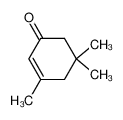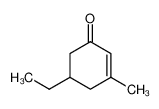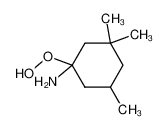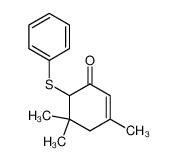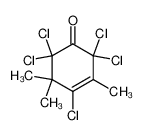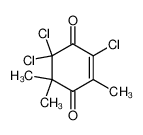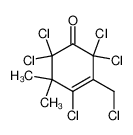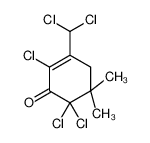| Product name | isophorone |
|---|
| Product number | - |
|---|---|
| Other names | Isooctopherone |
| Identified uses | For industry use only. Isophorone is used mainly as a solvent for concentrated vinyl chloride/acetate-based coating systems for metal cans, other metal paints, nitrocellulose finishes, and printing inks for plastics. Isophorone is also used in some herbicide and pesticide formulations and in adhesives for plastics, polyvinylchloride, and polystyrene materials. Isophorone is an intermediate in the synthesis of 3,5-xylenol, 3,3,5-trimethylcyclohexanol, and plant growth retardants. |
|---|---|
| Uses advised against | no data available |
| Company | MOLBASE (Shanghai) Biotechnology Co., Ltd. |
|---|---|
| Address | Floor 4 & 5, Building 12, No. 1001 North Qinzhou Road, Xuhui District, Shanghai, China |
| Telephone | +86(21)64956998 |
| Fax | +86(21)54365166 |
| Emergency phone number | +86-400-6021-666 |
|---|---|
| Service hours | Monday to Friday, 9am-5pm (Standard time zone: UTC/GMT +8 hours). |
Acute toxicity - Oral, Category 4
Acute toxicity - Dermal, Category 4
Eye irritation, Category 2
Specific target organ toxicity – single exposure, Category 3
Carcinogenicity, Category 2
2.2 GHS label elements, including precautionary statements| Pictogram(s) |   |
|---|---|
| Signal word | Warning |
| Hazard statement(s) | H302 Harmful if swallowed H312 Harmful in contact with skin H319 Causes serious eye irritation H335 May cause respiratory irritation H351 Suspected of causing cancer |
| Precautionary statement(s) | |
| Prevention | P264 Wash ... thoroughly after handling. P270 Do not eat, drink or smoke when using this product. P280 Wear protective gloves/protective clothing/eye protection/face protection. P261 Avoid breathing dust/fume/gas/mist/vapours/spray. P271 Use only outdoors or in a well-ventilated area. P201 Obtain special instructions before use. P202 Do not handle until all safety precautions have been read and understood. |
| Response | P301+P312 IF SWALLOWED: Call a POISON CENTER/doctor/…if you feel unwell. P330 Rinse mouth. P302+P352 IF ON SKIN: Wash with plenty of water/... P312 Call a POISON CENTER/doctor/…if you feel unwell. P321 Specific treatment (see ... on this label). P362+P364 Take off contaminated clothing and wash it before reuse. P305+P351+P338 IF IN EYES: Rinse cautiously with water for several minutes. Remove contact lenses, if present and easy to do. Continue rinsing. P337+P313 If eye irritation persists: Get medical advice/attention. P304+P340 IF INHALED: Remove person to fresh air and keep comfortable for breathing. P308+P313 IF exposed or concerned: Get medical advice/ attention. |
| Storage | P403+P233 Store in a well-ventilated place. Keep container tightly closed. P405 Store locked up. |
| Disposal | P501 Dispose of contents/container to ... |
none
3.Composition/information on ingredients 3.1 Substances| Chemical name | Common names and synonyms | CAS number | EC number | Concentration |
|---|---|---|---|---|
| isophorone | isophorone | 78-59-1 | none | 100% |
Consult a physician. Show this safety data sheet to the doctor in attendance.
If inhaledFresh air, rest. Artificial respiration may be needed. Refer for medical attention.
In case of skin contactRemove contaminated clothes. Rinse and then wash skin with water and soap.
In case of eye contactFirst rinse with plenty of water for several minutes (remove contact lenses if easily possible), then refer for medical attention.
If swallowedRinse mouth. Give a slurry of activated charcoal in water to drink. Do NOT induce vomiting.
4.2 Most important symptoms/effects, acute and delayedLIQUID: Irritating to skin and eyes. Harmful if swallowed. (USCG, 1999)
4.3 Indication of immediate medical attention and special treatment needed, if necessaryBasic treatment: Establish a patent airway. Suction if necessary. Watch for signs of respiratory insufficiency and assist ventilations if necessary. Administer oxygen by nonrebreather mask at 10 to 15 L/min. Monitor for pulmonary edema and treat if necessary ... . For contamination, flush eyes immediately with water. Irrigate each eye continuously with normal saline during transport ... . Do not use emetics. For ingestion, rinse mouth and administer 5 ml/kg up to 200 ml of water for dilution if the patient can swallow, has a strong gag reflex, and does not drool. Administer activated charcoal ... . /Ketones and related compounds/
5.Fire-fighting measures 5.1 Extinguishing media Suitable extinguishing mediaDo not extinguish fire unless flow can be stopped. Use water in flooding quantities as fog. Solid streams of water may be ineffective. Cool all affected containers with flooding quantities of water. Apply water from as far a distance as possible. Use "alcohol" foam, dry chemical or carbon dioxide.
5.2 Specific hazards arising from the chemicalCombustible. (USCG, 1999)
5.3 Special protective actions for fire-fightersWear self-contained breathing apparatus for firefighting if necessary.
6.Accidental release measures 6.1 Personal precautions, protective equipment and emergency proceduresUse personal protective equipment. Avoid dust formation. Avoid breathing vapours, mist or gas. Ensure adequate ventilation. Evacuate personnel to safe areas. Avoid breathing dust. For personal protection see section 8.
6.2 Environmental precautionsPersonal protection: filter respirator for organic gases and vapours adapted to the airborne concentration of the substance. Collect leaking and spilled liquid in sealable containers as far as possible. Absorb remaining liquid in sand or inert absorbent. Then store and dispose of according to local regulations.
6.3 Methods and materials for containment and cleaning upIf leak or spill has not ignited, use water spray to disperse vapors & to protect men attempting to stop leak.
7.Handling and storage 7.1 Precautions for safe handlingAvoid contact with skin and eyes. Avoid formation of dust and aerosols. Avoid exposure - obtain special instructions before use.Provide appropriate exhaust ventilation at places where dust is formed. For precautions see section 2.2.
7.2 Conditions for safe storage, including any incompatibilitiesSeparated from strong oxidants, strong bases and amines.store in a cool, dry, well-ventilated location. Outside or detached storage is preferred. Separate from oxidizing materials.
8.Exposure controls/personal protection 8.1 Control parameters Occupational Exposure limit valuesRecommended Exposure Limit: 10 Hr Time-Weighted Avg: 4 ppm (23 mg/cu m).
Biological limit valuesno data available
8.2 Appropriate engineering controlsHandle in accordance with good industrial hygiene and safety practice. Wash hands before breaks and at the end of workday.
8.3 Individual protection measures, such as personal protective equipment (PPE) Eye/face protectionSafety glasses with side-shields conforming to EN166. Use equipment for eye protection tested and approved under appropriate government standards such as NIOSH (US) or EN 166(EU).
Skin protectionWear impervious clothing. The type of protective equipment must be selected according to the concentration and amount of the dangerous substance at the specific workplace. Handle with gloves. Gloves must be inspected prior to use. Use proper glove removal technique(without touching glove's outer surface) to avoid skin contact with this product. Dispose of contaminated gloves after use in accordance with applicable laws and good laboratory practices. Wash and dry hands. The selected protective gloves have to satisfy the specifications of EU Directive 89/686/EEC and the standard EN 374 derived from it.
Respiratory protectionWear dust mask when handling large quantities.
Thermal hazardsno data available
9.Physical and chemical properties| Physical state | light yellow liquid |
|---|---|
| Colour | Water-white liquid |
| Odour | Peppermint-like odor |
| Melting point/ freezing point | -8°C(lit.) |
| Boiling point or initial boiling point and boiling range | 215°C |
| Flammability | Class IIIA Combustible Liquid: Fl.P. at or above 60°C and below 93.33°C.Combustible. |
| Lower and upper explosion limit / flammability limit | Lower 0.8% by vol; upper 3.8% |
| Flash point | 84°C(lit.) |
| Auto-ignition temperature | 462.22°C (USCG, 1999) |
| Decomposition temperature | no data available |
| pH | no data available |
| Kinematic viscosity | 2.62 cP @ 20°C |
| Solubility | 0.1 to 1 mg/mL at 17.78°C |
| Partition coefficient n-octanol/water (log value) | log Kow = 1.70 |
| Vapour pressure | 0.2 mm Hg ( 20 °C) |
| Density and/or relative density | 0.923 |
| Relative vapour density | 4.77 (vs air) |
| Particle characteristics | no data available |
no data available
10.2 Chemical stabilityStable under recommended storage conditions.
10.3 Possibility of hazardous reactionsFlammable & explosive when exposed to heat or flame.Ketones, such as ISOPHORONE, are reactive with many acids and bases liberating heat and flammable gases (e.g., H2). The amount of heat may be sufficient to start a fire in the unreacted portion of the ketone. Ketones react with reducing agents such as hydrides, alkali metals, and nitrides to produce flammable gas (H2) and heat. Ketones are incompatible with isocyanates, aldehydes, cyanides, peroxides, and anhydrides. They react violently with aldehydes, HNO3, HNO3 + H2O2, and HClO4. Forms explosive peroxides
10.4 Conditions to avoidno data available
10.5 Incompatible materialsIncompatible with strong oxidizers
10.6 Hazardous decomposition productsno data available
11.Toxicological information Acute toxicity- Oral: LD50 Rat oral 1000-3450 mg/kg.
- Inhalation: LC50 Rat inhalation 7000 mg/cu m/4 hr
- Dermal: no data available
no data available
Serious eye damage/irritationno data available
Respiratory or skin sensitizationno data available
Germ cell mutagenicityno data available
CarcinogenicityCancer Classification: Group C Possible Human Carcinogen
Reproductive toxicityNo studies were located regarding developmental or reproductive effects in humans. (-) Limited evidence in animal studies suggests that isophorone may cause birth defects such as fetal malformations and growth retardation from inhalation exposure to isophorone during pregnancy.
STOT-single exposureno data available
STOT-repeated exposureno data available
Aspiration hazardno data available
12.Ecological information 12.1 Toxicity- Toxicity to fish: LC50 Pimephales promelas (fathead minnow) 145-255 mg/l/96 hr, flow through exposure. /From table
- Toxicity to daphnia and other aquatic invertebrates: EC50 Daphnia magna (water flea) 117 mg/l/48 hr, static exposure, immobilization.
- Toxicity to algae: no data available
- Toxicity to microorganisms: no data available
AEROBIC: Isophorone, present at 100 mg/l, reached 3% of its theoretical BOD in 2 weeks using an activated sludge inoculum at 30 mg/l and the Japanese MITI test(1). Removal of isophorone from unacclimated fresh and salt water seeded with settled domestic wastewater was 42 and 9%, respectively, after 20 days(3). Removal of isophorone from wastewater treated by various different biological treatment processes: trickling filter, activated sludge, aerated lagoon, and facultative lagoon was 19, 98, 24, and 30%, respectively(4); therefore this compound is not expected to biodegrade rapidly(SRC). A 100% loss was observed when 5 and 10 mg/l isophorone underwent a 7-day static incubation in the dark at 25°C under aerobic conditions using settled domestic wastewater as inoculum(2). Using a multi-level respirometric test protocol employing a sludge microbiota, a half-life of 25 days for 100 mg test compound was determined(5).
12.3 Bioaccumulative potentialA BCF of 7 was measured for isophorone in bluegill sunfish(1). The half-life of isophorone in fish tissue was found to be 1 day(1). According to a classification scheme(2), this BCF suggests the potential for bioconcentration in aquatic organisms is low(SRC).
12.4 Mobility in soilThe Koc of isophorone is estimated as 200(SRC), using a log Kow of 1.7(1) and a regression-derived equation(2). According to a classification scheme(3), this estimated Koc value suggests that isophorone is expected to have moderate mobility in soil.
12.5 Other adverse effectsno data available
13.Disposal considerations 13.1 Disposal methods ProductThe material can be disposed of by removal to a licensed chemical destruction plant or by controlled incineration with flue gas scrubbing. Do not contaminate water, foodstuffs, feed or seed by storage or disposal. Do not discharge to sewer systems.
Contaminated packagingContainers can be triply rinsed (or equivalent) and offered for recycling or reconditioning. Alternatively, the packaging can be punctured to make it unusable for other purposes and then be disposed of in a sanitary landfill. Controlled incineration with flue gas scrubbing is possible for combustible packaging materials.
14.Transport information 14.1 UN Number| ADR/RID: UN1993 | IMDG: UN1993 | IATA: UN1993 |
| ADR/RID: FLAMMABLE LIQUID, N.O.S. |
| IMDG: FLAMMABLE LIQUID, N.O.S. |
| IATA: FLAMMABLE LIQUID, N.O.S. |
| ADR/RID: 3 | IMDG: 3 | IATA: 3 |
| ADR/RID: II | IMDG: II | IATA: II |
| ADR/RID: no | IMDG: no | IATA: no |
no data available
14.7 Transport in bulk according to Annex II of MARPOL 73/78 and the IBC Codeno data available
15.Regulatory information 15.1 Safety, health and environmental regulations specific for the product in question| Chemical name | Common names and synonyms | CAS number | EC number |
|---|---|---|---|
| isophorone | isophorone | 78-59-1 | none |
| European Inventory of Existing Commercial Chemical Substances (EINECS) | Listed. | ||
| EC Inventory | Listed. | ||
| United States Toxic Substances Control Act (TSCA) Inventory | Listed. | ||
| China Catalog of Hazardous chemicals 2015 | Not Listed. | ||
| New Zealand Inventory of Chemicals (NZIoC) | Listed. | ||
| Philippines Inventory of Chemicals and Chemical Substances (PICCS) | Listed. | ||
| Vietnam National Chemical Inventory | Listed. | ||
| Chinese Chemical Inventory of Existing Chemical Substances (China IECSC) | Listed. | ||
| Creation Date | Aug 12, 2017 |
|---|---|
| Revision Date | Aug 12, 2017 |
- CAS: Chemical Abstracts Service
- ADR: European Agreement concerning the International Carriage of Dangerous Goods by Road
- RID: Regulation concerning the International Carriage of Dangerous Goods by Rail
- IMDG: International Maritime Dangerous Goods
- IATA: International Air Transportation Association
- TWA: Time Weighted Average
- STEL: Short term exposure limit
- LC50: Lethal Concentration 50%
- LD50: Lethal Dose 50%
- EC50: Effective Concentration 50%
- IPCS - The International Chemical Safety Cards (ICSC), website: http://www.ilo.org/dyn/icsc/showcard.home
- HSDB - Hazardous Substances Data Bank, website: https://toxnet.nlm.nih.gov/newtoxnet/hsdb.htm
- IARC - International Agency for Research on Cancer, website: http://www.iarc.fr/
- eChemPortal - The Global Portal to Information on Chemical Substances by OECD, website: http://www.echemportal.org/echemportal/index?pageID=0&request_locale=en
- CAMEO Chemicals, website: http://cameochemicals.noaa.gov/search/simple
- ChemIDplus, website: http://chem.sis.nlm.nih.gov/chemidplus/chemidlite.jsp
- ERG - Emergency Response Guidebook by U.S. Department of Transportation, website: http://www.phmsa.dot.gov/hazmat/library/erg
- Germany GESTIS-database on hazard substance, website: http://www.dguv.de/ifa/gestis/gestis-stoffdatenbank/index-2.jsp
- ECHA - European Chemicals Agency, website: https://echa.europa.eu/





